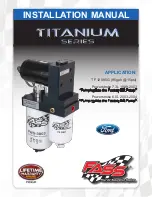
controls work and what to do to
maintain them. This section
summarizes how the emissions
controls work. Scheduled
maintenance is on page
122
-
123
.
Crankcase Emissions
Control System
Your car has a Positive Crankcase
Ventilation (PCV) System. This
keeps gasses that build up in the
engine's crankcase from going
into the atmosphere. The PCV
valve routes them from the
crankcase back to the intake
manifold. They are then drawn
into the engine and burned.
Evaporative Emissions
Control System
As fuel evaporates in the fuel
tank, an evaporative emissions
control canister filled with
charcoal adsorbs the vapor. It is
stored in this canister while the
engine is off. After the engine is
started and warmed up, the vapor
is drawn into the engine and
burned during driving.
Exhaust Emissions Controls
The exhaust emissions controls
include four systems: PGM-FI,
ignition timing control, exhaust
gas recirculation, and three-way
catalytic converter. These four
systems work together to control
the engine's combustion and
minimize the amount of HC, CO,
and NOx that comes out the
tailpipe. The exhaust emissions
control systems are separate from
the crankcase and evaporative
emissions control systems.
PGM-FI System
The PGM-FI system uses
sequential multiport fuel injection.
It has three sub-systems: air
intake, engine control, and fuel
control. The engine control
module (ECM) uses various
sensors to determine how much
air is going into the engine. It then
controls how much fuel to inject
under all operating conditions.
Ignition Timing Control System
This system constantly adjusts the
ignition timing, reducing the amount
of HC, CO and NOx produced.
Technical Information
Содержание 1997 Accord Wagon
Страница 61: ...Heating and Cooling Comfort and Convenience Features...
Страница 184: ...UNDERHOOD FUSE BOX EX Taking Care of the Unexpected...
Страница 185: ...ABS FUSE BOX INTERIOR FUSE BOX Taking Care of the Unexpected...
Страница 191: ...1 LX 2 EX Technical Information...
















































